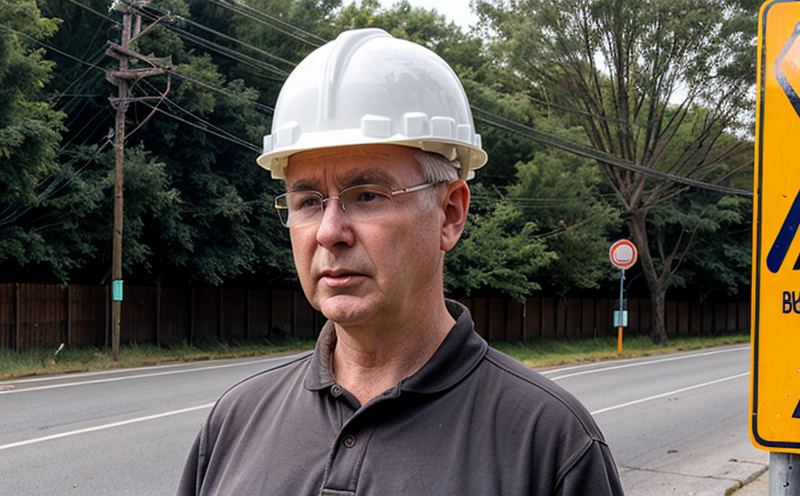ISO 6398 Noise Testing of Agricultural Equipment
The ISO 6398 standard provides a comprehensive framework for testing and evaluating noise emissions from agricultural machinery. This service is critical for ensuring that equipment operates within regulatory limits, enhances operator safety, and minimizes environmental impact. Compliance with this standard is essential for manufacturers aiming to meet international quality standards and protect the well-being of their end users.
The process begins with thorough preparation of the test specimen—typically a representative sample of agricultural machinery. This step ensures that the equipment used in testing reflects real-world conditions as closely as possible. The noise emitted by these machines is then measured using specialized sound level meters, calibrated to meet ISO 6398 specifications.
Testing is conducted under controlled environmental conditions, simulating various operational scenarios to capture a comprehensive profile of the machinery's acoustic behavior. This includes measuring octave band levels at specified distances from the equipment. The data collected helps in assessing whether the noise emissions comply with the limits set forth by ISO 6398.
One of the key aspects of this service is the use of advanced instrumentation and software to analyze sound propagation and absorption properties of agricultural machines. This allows for precise measurement and evaluation, ensuring accurate results that can be relied upon for regulatory compliance.
The importance of noise testing cannot be overstated, especially in an industry where machinery operates closely with human operators over extended periods. Reducing noise exposure protects workers from hearing loss and other health risks associated with prolonged high-decibel environments. Moreover, the data generated through this testing can inform design improvements aimed at reducing noise levels without compromising operational efficiency.
For manufacturers, compliance with ISO 6398 not only ensures product safety but also enhances brand reputation by demonstrating a commitment to environmental responsibility and worker well-being. This standard is particularly relevant given the increasing focus on sustainability across all sectors of manufacturing.
Why It Matters
The noise emitted by agricultural equipment can have significant impacts on both human health and operational efficiency. Excessive noise levels are linked to hearing damage, stress, and reduced productivity among workers. By adhering to ISO 6398 standards during the design and production phases, manufacturers can mitigate these risks effectively.
Compliance with this standard also aligns with broader environmental goals by promoting quieter operations that contribute less to noise pollution in agricultural settings. This is particularly important given the growing awareness of sustainable practices across industries. Additionally, certification under ISO 6398 can open up new markets for compliant products, enhancing market competitiveness.
For quality managers and compliance officers, ensuring adherence to these standards provides a clear pathway towards meeting regulatory requirements while maintaining product integrity. It also facilitates smoother interactions with regulatory bodies and potential clients who prioritize sustainable manufacturing practices.
Applied Standards
| Auditory Criteria | Test Methods | Environmental Conditions | Acceptance Limits |
|---|---|---|---|
| - Hearing protection requirements - Noise exposure limits - Sound pressure level thresholds |
- Use of sound level meters and octave band analyzers - Controlled environmental testing conditions - Operational scenario simulations |
- Temperature, humidity, altitude, and wind speed parameters - Compliance with ISO 6398 specifications |
- Specified noise levels for different equipment categories - Acceptance criteria based on octave band analysis |
| - Equipment must not exceed specified sound pressure levels at defined distances |
Scope and Methodology
The scope of ISO 6398 noise testing encompasses a wide range of agricultural machinery, including tractors, harvesters, balers, and other equipment used in field operations. The methodology involves several key steps:
- Preparation: Selection of representative samples to ensure the tests reflect real-world usage.
- Testing: Measurement of noise emissions at specified distances using calibrated sound level meters.
- Data Analysis: Interpretation of data collected under controlled conditions, comparing it against ISO 6398 standards.
The methodology also includes the use of advanced software to simulate different operational scenarios and analyze sound propagation. This approach ensures that all relevant factors are considered during testing, providing a holistic assessment of noise emissions.
For R&D engineers, this service offers invaluable insights into the acoustic performance of new designs. By identifying potential issues early in the development process, they can make informed decisions about design modifications to meet or exceed ISO 6398 standards. This proactive approach not only ensures compliance but also enhances product quality and marketability.
For procurement teams, ensuring that suppliers deliver equipment meeting these stringent noise emission limits is crucial for maintaining high-quality operations across the entire supply chain.





